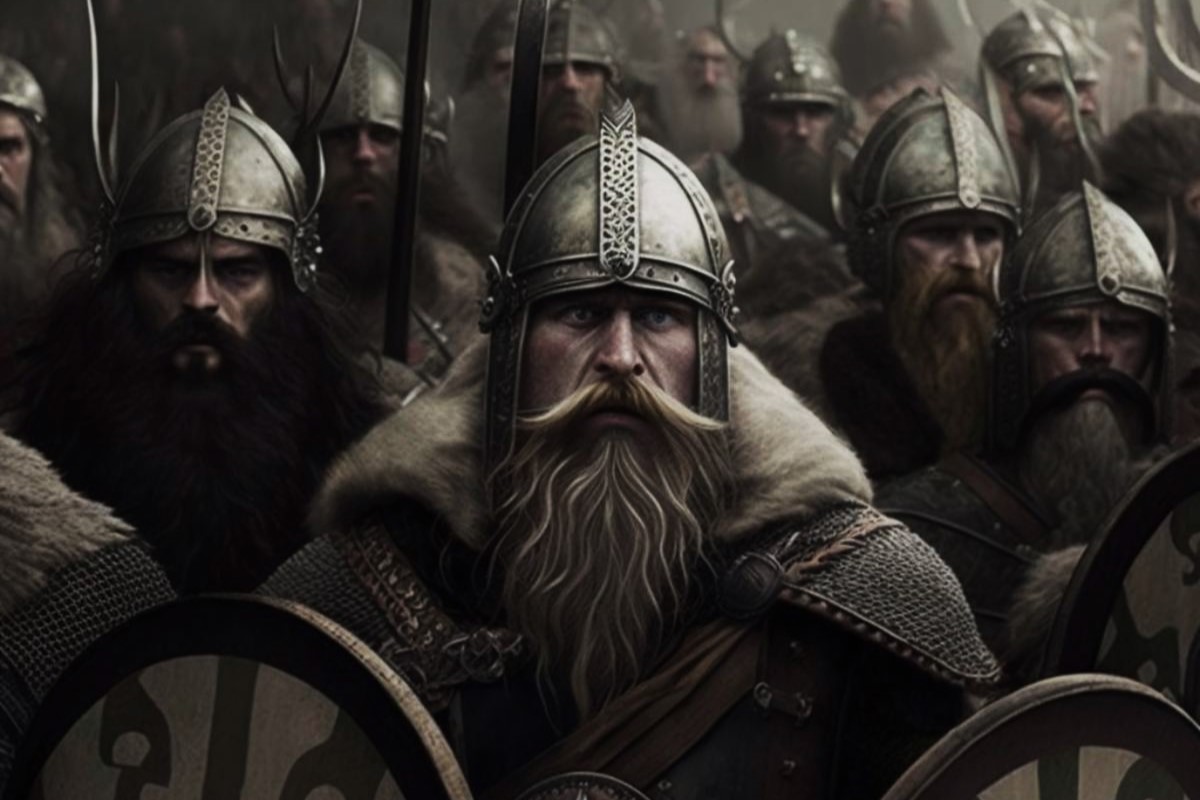
Did you know the Second Viking Invasion of the British Isles changed history forever? This period, spanning from 865 to 954 AD, saw fierce Norse warriors, known as Vikings, launching relentless raids and establishing settlements across England, Scotland, and Ireland. Unlike their earlier hit-and-run tactics, these invaders aimed to conquer and colonize. Led by legendary figures like Ivar the Boneless and Guthrum, the Vikings clashed with Anglo-Saxon kings, leading to epic battles and dramatic shifts in power. Their influence reshaped the political landscape, leaving a lasting legacy in culture, language, and even place names. Curious about how these seafaring marauders left their mark? Dive into these 25 fascinating facts to uncover the true impact of the Second Viking Invasion on the British Isles.
Key Takeaways:
- The Second Viking Invasion of the British Isles in the late 10th to early 11th century brought fierce battles, cultural exchanges, and lasting impacts on England, including the unification of the country.
- The Vikings, led by Sweyn Forkbeard, targeted England for its wealth, influencing language, art, and architecture, and ultimately leading to the unification of England under Cnut the Great.
The Second Viking Invasion: An Overview
The Second Viking Invasion of the British Isles was a turbulent period marked by fierce battles, shifting alliances, and significant cultural exchanges. This era, spanning from the late 10th to the early 11th century, saw the Vikings returning with renewed vigor and ambition. Here are some fascinating facts about this historical epoch.
- The Second Viking Invasion began in 980 AD, almost a century after the first wave of Viking raids had subsided.
- King Æthelred the Unready, who ruled England during this period, struggled to fend off the Viking incursions.
- The term "Unready" actually comes from the Old English word "unræd," meaning "poorly advised," not unprepared.
- The Vikings targeted England due to its wealth, particularly its monasteries, which were rich in gold and silver.
- The infamous Viking leader Sweyn Forkbeard led many of the raids during this period.
- Sweyn Forkbeard eventually declared himself King of England in 1013, though his reign was short-lived.
- The Vikings employed a strategy of "hit-and-run" raids, striking quickly and retreating before local forces could respond.
- The English paid large sums of money, known as Danegeld, to the Vikings in an attempt to buy peace.
- Despite these payments, the Vikings often returned for more, seeing the Danegeld as a sign of weakness.
- The Battle of Maldon in 991 was a significant conflict during this period, where the English were defeated by Viking forces.
- The Vikings established several strongholds in England, including the fortified town of Jorvik (modern-day York).
- The Viking presence in England led to significant cultural exchanges, influencing the English language, art, and architecture.
- Many place names in England, particularly in the north and east, have Viking origins.
- The Viking longships, known for their speed and agility, were crucial to their success in these invasions.
- The Vikings also targeted other parts of the British Isles, including Scotland, Ireland, and Wales.
- The Irish city of Dublin was originally founded by Viking settlers in the 9th century.
- The Vikings introduced new agricultural techniques and tools to the British Isles.
- The Viking invasions led to the construction of numerous fortifications and defensive structures across England.
- The English navy was significantly expanded and improved in response to the Viking threat.
- The Viking influence extended beyond warfare, impacting trade and commerce in the British Isles.
- The death of Sweyn Forkbeard in 1014 led to a brief period of English resurgence under King Æthelred.
- Sweyn's son, Cnut the Great, continued his father's ambitions and eventually became King of England in 1016.
- Cnut's reign marked a period of relative stability and prosperity, as he ruled over a North Sea Empire that included England, Denmark, and Norway.
- The Viking invasions ultimately led to the unification of England, as local rulers banded together to resist the common threat.
- The legacy of the Viking invasions can still be seen today in the cultural and genetic makeup of the British Isles.
The Legacy of the Second Viking Invasion
The Second Viking Invasion of the British Isles left a lasting mark on history. Vikings didn't just raid; they settled, traded, and influenced local cultures. Their impact can still be seen in place names, language, and even genetic traces in modern populations. The invasions led to significant political changes, including the establishment of the Danelaw, where Viking laws and customs held sway.
Understanding this period helps us appreciate the complex tapestry of British history. The Vikings weren't just marauders; they were also farmers, traders, and settlers who contributed to the cultural melting pot of the British Isles. Their legacy is a testament to the enduring influence of these seafaring warriors. So next time you hear about Vikings, remember their role in shaping the history and culture of the British Isles.
Frequently Asked Questions
Was this page helpful?
Our commitment to delivering trustworthy and engaging content is at the heart of what we do. Each fact on our site is contributed by real users like you, bringing a wealth of diverse insights and information. To ensure the highest standards of accuracy and reliability, our dedicated editors meticulously review each submission. This process guarantees that the facts we share are not only fascinating but also credible. Trust in our commitment to quality and authenticity as you explore and learn with us.
